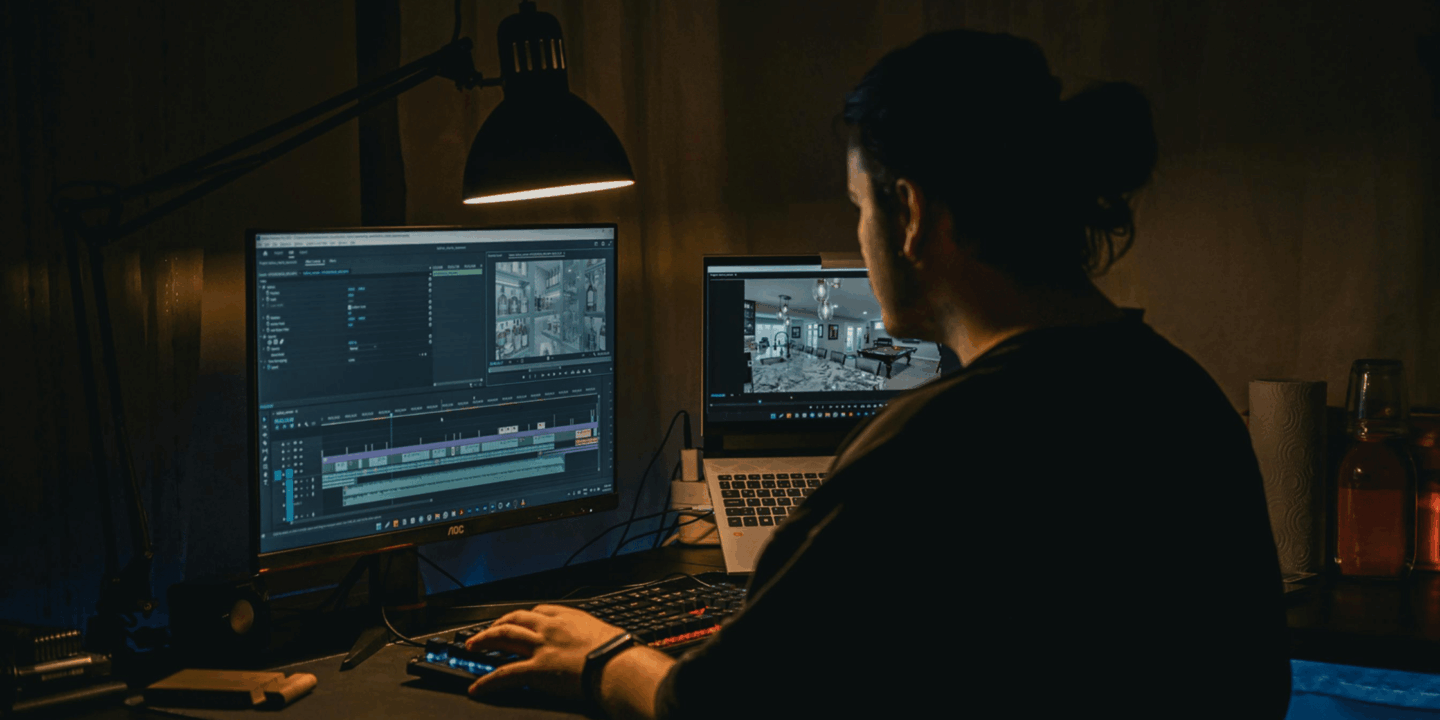
AI video creation uses automation and machine learning to generate videos from text, scripts, or existing content. Traditional video editing requires manually arranging, cutting, and refining footage. The core difference lies in efficiency and accessibility. AI handles the technical process so creators can focus on story, message, and brand strategy instead of software complexity.
How does AI video creation work?
AI video creation platforms such as Lumen5 use natural language processing (NLP) and machine learning (ML) to analyze text and automatically design a matching video structure. The software interprets tone, keywords, and context, then selects visuals, animations, and music that align with the message.
You can paste a blog post or enter a URL, and the AI produces a draft that includes scene transitions, subtitles, and pacing suggestions. This workflow saves hours of manual editing and gives creators a strong foundation to refine.
Harvard Business Review explains that generative AI now assists with creative work by automating mechanical steps while humans retain control of ideas, tone, and narrative direction.
To see this in practice, explore How to Turn Blog Posts into Videos in 5 Minutes Using Lumen5, which walks through a real text-to-video workflow.
What are the main differences between AI and traditional editing?
Traditional video editing is a detailed, manual process that demands expertise in professional software like Adobe Premiere Pro or Final Cut Pro. Editors manage cuts, effects, transitions, color correction, and sound design by hand, often spending hours perfecting each frame.
AI video creation takes a different approach. It starts by analyzing the text or input data and then automatically pairs visuals, timing, and transitions that fit the message. The result is a ready-to-edit draft that can be customized further but already looks polished and engaging.
The difference extends beyond workflow. Traditional editing prioritizes control and precision, while AI emphasizes scalability and accessibility. As HubSpot’s guide to AI video tools notes, AI platforms allow marketers and content teams to create professional-quality videos without specialized editing skills, making video storytelling available to a much wider audience.
How does AI improve video production speed?
AI improves video production speed by automating time-consuming steps such as selecting stock media, timing scenes, adding captions, and choosing background music. Instead of starting from scratch, creators begin with a structured, near-complete draft.
Tools like Lumen5 enable teams to create multiple branded videos in minutes, converting existing assets such as blogs or webinars into short-form content. This rapid turnaround helps marketing teams stay consistent and timely across platforms like LinkedIn, Instagram, and YouTube.
Forbes highlights how AI allows marketing departments to scale production without expanding staff, enabling more campaigns and content variations. Automation reduces production bottlenecks and gives creative teams the freedom to experiment with ideas instead of spending time on repetitive tasks.
Can AI maintain creativity and brand consistency?
Yes. AI video tools are built to support creativity while maintaining brand identity. Platforms like Lumen5 let teams apply brand templates that include company colors, fonts, and logos to ensure every video reflects the same visual identity.
AI takes care of technical layout, transitions, and timing, while human creators focus on storytelling and emotion. This collaboration makes it possible to produce consistent, high-quality videos that feel authentic and on-brand.
WIRED’s The Creative’s Toolbox Gets an AI Upgrade explains that AI-assisted tools act as creative partners, helping designers and marketers expand their capacity without removing the human perspective that makes stories meaningful.
When should teams use AI video creation?
AI video creation works best when speed, volume, and consistency are priorities. Common use cases include:
- Repurposing blogs, newsletters, or reports into short videos
- Producing frequent social media video content
- Building training and e-learning videos for teams or customers
- Keeping visual branding consistent across all content
Traditional video editing remains valuable for cinematic storytelling, custom animation, or projects that require advanced effects. For most content marketing and education workflows, however, AI video creation offers the most efficient and scalable approach.
To develop an ongoing strategy, read Creating Evergreen Video Marketing Content. For a broader understanding of AI’s impact on creative industries, explore MIT Sloan Management Review’s 10 AI Must-Reads for 2024.
Conclusion: The future of AI-powered video creation
AI video creation is transforming how organizations produce and share stories. It streamlines repetitive editing tasks, accelerates production timelines, and allows teams to focus on creativity and message rather than mechanics.
Tools like Lumen5 help marketers, educators, and enterprises convert long-form content into engaging videos that align with brand identity and storytelling goals.
For a deeper look at how generative AI is reshaping creative workflows, read MIT Sloan’s research on how GenAI changes creative work.
👉 Try Lumen5 to experience how AI can simplify your workflow and help your team create professional-quality videos in minutes.
TL;DR
- Combining AI automation with human creativity leads to the best results
- AI video creation automates key editing steps and accelerates production
- Traditional editing provides full manual control but takes more time and skill
- AI tools help teams repurpose content and keep brand consistency


